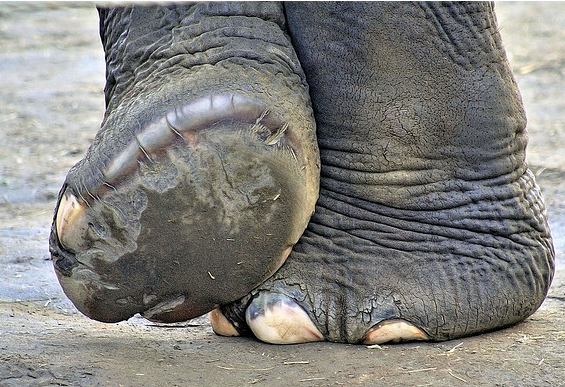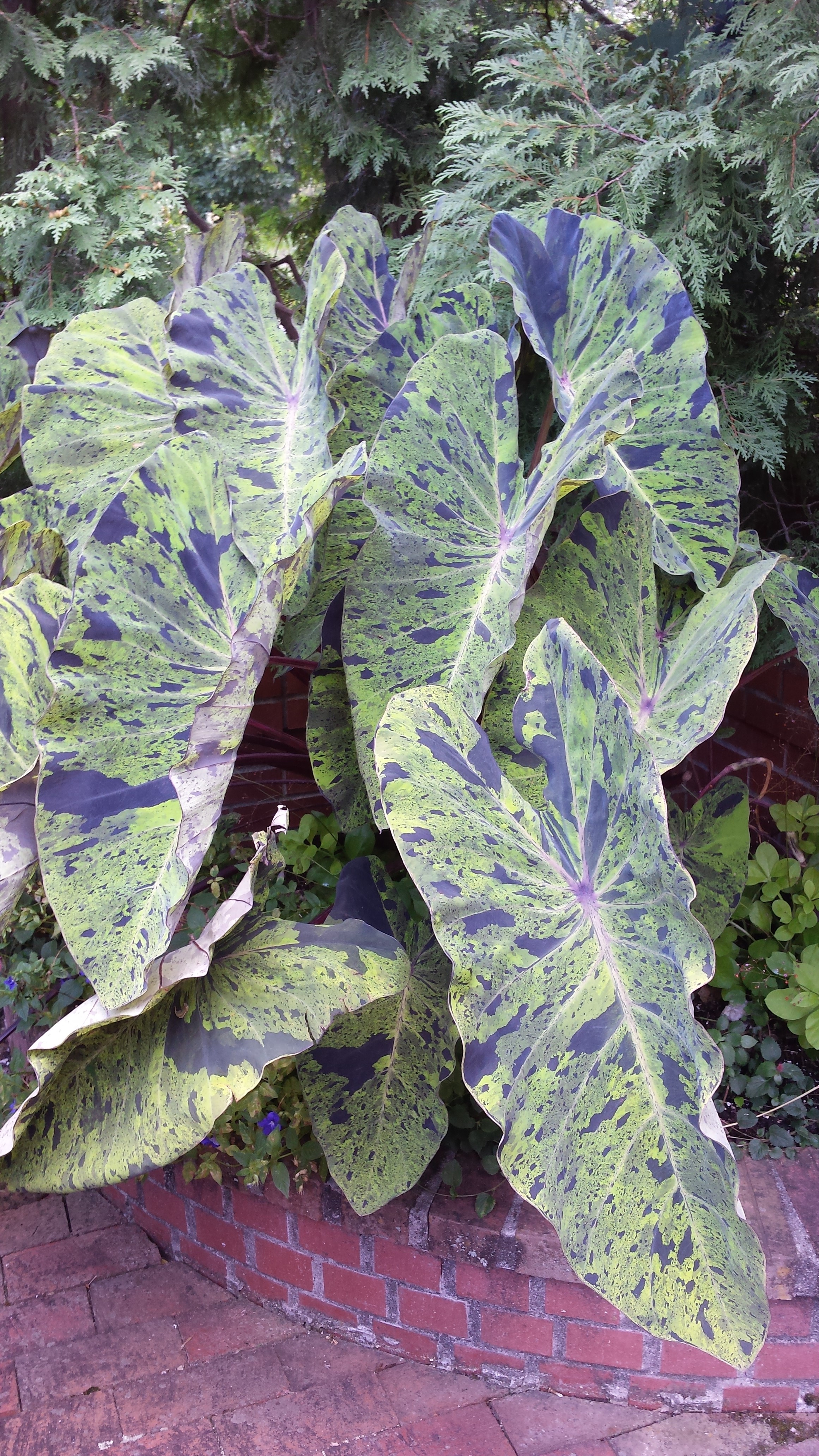Today’s topic is When Should I Transplant Elephant Ears. Obviously, you can find a great deal of Do Elephant Ears Come Back Every Year-related content online. The proliferation of online platforms has streamlined our access to information.
There is a connection between the Elephant Ear Wilting After Transplant and when can i move elephant ears information. more searching has to be done for when can i move my elephant ear outside, which will also be related to Can You Transplant Elephant Ears In Summer.

45 Things About When Should I Transplant Elephant Ears | Elephant Ear Plant Care Guide
- Several plants are called elephant ear, most are in the species of Colocasia and Alocasia. They have differing growth habits: some make offshoots from a central corm while others spread by sending out sub-surface roots. It looks like you hit the jackpot for a spreading elephant ear! - Source: Internet
- Pick an area in your home that has bright, indirect sunlight. Elephant ears can handle direct sunlight, but the light shining through the window can cause the plants to burn over time. They do much better in indirect sunlight. - Source: Internet
- Whether you want to grow elephant ears in containers inside or outside, these plants thrive well in these environments. Make sure you pick a large container that gives the roots plenty of space to grow, and pick a spot that provides the plant with enough sunlight for optimal growth. If you decide to grow elephant ears in containers, be sure to give enough water and fertilizer so that your plants can thrive. - Source: Internet
- Next is the temperature, elephant ear plants like it warm and temperate. To be more specific, they do not like anything below 16 °C (61°F) year round, even in the winter. If the temperature drops below this for an extended period of time it can encourage your plant to go into dormancy. - Source: Internet
- Huge leaves and bold vein patterns make elephant’s ear easy to spot. Popular indoors and outdoors, this tropical plant makes an eye-catching statement, no matter where it is planted. Call on it to serve as a focal point where its easy-care foliage will add interest throughout the growing season and year-round indoors. - Source: Internet
- In warm, frost-free climates (zones 9-11), elephant ears can be grown outdoors year-round. In cooler areas (zones 3-8) they are usually grown as annuals. When planted in spring, they become large, impressive plants within just a few months, so be sure to give them plenty of room. - Source: Internet
- One look at these plants should tell you that they need a lot of water. Growing huge leaves requires a lot of moisture, so you need to water regularly. This is especially true if you grow elephant ears in pots; the water will drain out faster, so you need to check the soil frequently. - Source: Internet
- Most elephant’s ears are perennials and will come back every summer in the Lower, Coastal, and Tropical South. Some are perennials in the lower part of the Middle South. They like the soil to be relatively dry in winter. If gardening any farther north than that, lift tubers before the first frost and store them in a cool, dry place over the winter months. - Source: Internet
- Too much direct sun can burn their beautiful leaves, especially on some of the smaller varieties like Alocasia polly. Elephant ear varieties with darker leaves generally like more shade. I’ll talk about some of these specifics in the elephant ear varieties section below. - Source: Internet
- So I’m going to focus on this variety since it’s so popular and it’s what I have. Alocasia polly is an absolutely striking plant with leaves that look less like elephant ears and more like arrowheads. In the right conditions and during its active growing season, this plant grows quickly. - Source: Internet
- Elephant ears are a tropical plant that goes best in warmer weather, and they’re known for producing large leaves that can be several feet wide. The leaves can be dark green, lime green, variegated, purple, or anything in between. If you don’t have a large garden, you can still learn how to grow elephant ears in containers. - Source: Internet
- Overwinter elephant’s ear in cool regions by bringing in potted plants before the first frost. Place plants in a cool, humid location and reduce watering in winter. Cold climate gardeners can grow elephant’s ear as annual plants, purchasing new plants each year. - Source: Internet
- The many varieties of elephant ear plants enjoy partial shade to indirect, bright sun. Some varieties even enjoy full sun, but they shouldn’t have full sun all day. Most of mine are partially under a deck where they get full sun from about 2 PM on, filtered sun before that. - Source: Internet
- Grow elephant’s ears en masse for a big show of texture and color, or use one as a specimen for a striking accent. They thrive in big pots and will work in water gardens if placed in submerged containers. Elephant’s ears mix great with each other and also combine well with the flashy foliage of other tropicals such as bananas, cannas, and crinums. For a colorful summer combo, try this container recipe in a big pot: Use chocolate leaves of ‘Puckered Up’ elephant’s ear as the thriller, the pink flowers of ‘Fanfare Orchid’ impatiens as the filler, and the chartreuse foliage of ‘Margarita’ sweet potato vine as a spiller. - Source: Internet
- I’m also updating this post from the original publishing to include ANOTHER spider mite infestation on an elephant ear. Man, I just do not have good luck with these plants indoors. For the cutting my parents gave me (that I mentioned earlier in the post), I made sure to regularly mist it—almost daily—through the winter in my dry house. - Source: Internet
- Many elephant’s ear plants grow best when their roots aren’t disturbed after they begin to grow. Sink the potted plant into the ground so the pot’s rim is level with the surrounding grade. Water and fertilize outdoor elephant’s ear regularly. Indoor plants grow best when soil is allowed to dry out slightly before watering. Also, fertilize indoor plants with a houseplant fertilizer in spring and summer and cease fertilizing in fall and winter. - Source: Internet
- To propagate these plants you need to cut the elephant pup from the parent plant (make sure it has roots attached), then pot the pup into a new pot with a well-draining potting mix. If you are keeping the plants inside you will only need to water them weekly, to begin with, but if they are being kept outside in the full sun you may need to initially water them every 1 to 2 days until established. A mature elephant ear plant (Alocasia) at the Brisbane Botanic Gardens. - Source: Internet
- Zone: Elephant ears are tropical plants. In zones 9-11 they can be grown outdoors year-round. In cooler areas (zones 3-8) the bulbs are planted in the spring and usually grown as annuals. To find your USDA Hardiness Zone, check the map here. - Source: Internet
- Lifting and properly storing the rhizomes is among the most important parts of caring for elephant ear plants. Lift and bring the rhizomes indoors well before the first frost since damaged plants may not return in spring. The foliage will yellow and droop as the days and nights cool, at which point the rhizomes should be lifted from the ground and prepared for storage. Wear gloves when working with elephant ears since some species are toxic. - Source: Internet
- There are four main types of elephant ear plants, and their watering, soil, and light requirements are all a bit different. Their needs can also be different when grown outdoors in the ground, outdoors in pots, or indoors in pots as houseplants. I’m going to break down the specific needs of the four elephant ear types now: Colocasia, Alocasia, Caladium, and Xanthosoma. - Source: Internet
- Q: This elephant ear started about seven years ago from a shriveled up bulb found in a work bench area. It has gotten so big I need to know the easiest way to transplant some of it to different areas of my yard. Is it easy to transplant portions? - Source: Internet
- If you have your elephant ear plants indoors, they will do well with bright indirect sun. A diluted run-of-the-mill fertilizer monthly during growing season won’t hurt. I throw a handful of Epsom salts into my elephant ear pots roughly monthly when watering. - Source: Internet
- The growth expected from elephant ear plants is moderate. During the active growing season you can expect around 1 leaf every month or slightly less than this. If you notice that your plant hasn’t produced any new growth in the past 6 months then it might not be very happy. If you haven’t already, try repotting your plant or adding fertiliser, this is a great way to give an extra boost and help with new growth. - Source: Internet
- When to Plant: Elephant ears are planted in spring after any danger of frost has passed. The tubers will not grow until the soil is warm, so don’t plant them until the soil temperature is at least 65ºF. In northern climates this will be early June. To get a jump on the season, elephant ears may be started in pots indoors, 4 to 6 weeks before you plan to put them outside. Grow them under lights or in a warm, sunny window. - Source: Internet
- Elephant ears do best in hot and bright areas, looking great as a backdrop to a cutting garden or along a pool. Their sturdy stems and lush nature also make them great choices for outdoor as well as indoor containers. The bulbs themselves are quite large and can make a great project for a young child to plant and watch grow! - Source: Internet
- Caladium, also referred to as angel wings, is a delicate-looking elephant-ear shaped plant with over 1,000 varieties. The most popular ones include a green and white variety with leaves that look almost like tissue paper. Other common varieties include red and pink tones. - Source: Internet
- Entryways Add a “wow” element to your front door by planting elephant ears in large containers. They make a big statement and always impress guests. Plant them on their own or pair them with other plants such as caladiums or coleus. - Source: Internet
- Dividing elephant ear plants is an easy way to propagate your plant, and multiply your elephant ear plants. Elephant ear plants spread out and grow by putting out runners from the parent plant. These runners will then come to the surface and start growing as pup/offshoots of the parent plant. - Source: Internet
- Elephant’s ear is becoming a popular houseplant. It’s held court in the garden for years but is making bold statements indoors thanks to some showy leaf varieties sized for growing indoors. Add houseplant types of elephant’s ear to end tables, desktops, and mantels for a touch of tropical plant life indoors. - Source: Internet
- Gently pry the rhizomes from the soil using a gardening fork, taking care not to pierce them with the sharp tines. The University of Illinois Extension recommends cutting back the foliage stems to an inch or so in length and drying the rhizomes for a few days. It is not uncommon to find the elephant ear bulbs rotted in spring due to poor storage, so it is vital to store them in a dark, dry place where temperatures stay between 55 and 32 degrees Fahrenheit. Keep them in a shoe box or paper bag filled with wood shavings, and make sure the rhizomes aren’t touching because that can increase the likelihood of rot. - Source: Internet
- Elephant ears reproduce by division of corms, which come from their tubers. Not all cultivars available today produce tubers, but you can easily propagate those that do by cutting the tuber into pieces, each with a corm on it, similar to the eyes of a potato. Plant the pieces after they have dried for a few days, and place the corms blunt end down, buried about two inches into the soil. The best planting time when starting elephant ears indoors is about eight weeks before the last frost date, to give the young plants a jump on the growing season. - Source: Internet
- Giving your plants large pots give their roots plenty of space to grow and thrive. You also won’t need to re-pot them too quickly. Also, larger pots dry out slower, so you won’t need to water as often. Remember, elephant ear plants prefer consistently moist soil to grow to their optimal size. - Source: Internet
- Elephant ear plants, also called taro, are tropical plants that like warm, moist conditions. It can be grown year-round in southern climates and should be brought indoors to serve as a houseplant in the winter in northern areas. Its best sun conditions are full sun, or partial shade in very warm climates. Soil for an elephant ear plant should be moist, and they even can be grown in water. Humidity helps elephant ears thrive, so you may want to place a humidifier near it when indoors. - Source: Internet
- Elephant’s ear grows best in part shade or filtered sun. Prolonged direct sunlight can scorch its leaves, marring them for the duration of the season. Plant elephant’s ear in a location where it receives morning sunlight and afternoon shade. An excellent plant for a shaded porch or patio, it thrives when planted in large containers. Well-drained, moist soil high in organic matter is ideal for elephant’s ear. - Source: Internet
- Storing elephant ear bulbs over the winter is similar to storing bulbs from any other plant. After the first frost, cut down all of the foliage (basically the stuff you can see) and leave only about 3 inches or so above the soil. Then dig up the bulbs and allow to dry for a few days in a cool, dry place like a garage. - Source: Internet
- Elephant ears grow rapidly, so you might have guessed that they require plenty of fertilization. It would be best to feed your plants every few weeks with a balanced fertilizer to provide necessary nutrients. Failure to do so could result in stunted growth. - Source: Internet
- Whether you are moving them indoors to keep them safe from the cold or aiming to enhance your indoor decoration, you can transplant elephant ears inside. The best way to transplant elephant ears involves carefully digging the root ball out of the ground, being sure not to damage the tuber in the process. The best way to transplant elephant ears in the winter is to cut the leaves back, leaving the top two leaves, and cutting the rest. - Source: Internet
- In USDA Hardiness Zones 7 to 11, elephant ears can be left outside year-round and are treated as perennials. In colder climates, they are typically treated as annuals and discarded at the end of the growing season. However, you could also dig up the tubers after the first fall frost, store the tubers indoors, and replant them next year after the last spring frost. - Source: Internet
- Alocasia macrorrhiza bears huge, glossy leaves shaped like alligator heads on rigid stems. This clumping plant grows to 8 feet tall. Zones 7-10 - Source: Internet
- Gently excavate around the green stems and identify small plants you can sever from the mother plant. These can easily be transplanted in your yard or given to friends for immediate planting. However, not all elephant ear species are winter hardy here. - Source: Internet
- The dramatic elephant ear plant is a large tropical foliage plant with magnificent, heart-shaped or arrow-shaped leaves. In colder regions, they need to be dug up and stored before winter arrives. Here’s how to grow elephant ears in your garden! - Source: Internet
- This post shares my elephant ear plant care guide. From Colocasia to Alocasia, Caladium, and Xanthosoma, I’m sharing care tips about all of the elephant ear varieties. They are beautiful plants that will make a stunning addition to your home or garden. - Source: Internet
- Caladium plants tend to stay on the smaller side like Alocasia polly plants. Unlike their other elephant ear buddies, they do very well with part to full shade. Mine only gets about an hour of sun and is doing great. They like moderate watering: not soggy. All Caladiums enjoy fertilizer while they are actively growing. - Source: Internet
- Outdoors, elephant ears are pretty patient plants. They can generally grow in sun or shade and enjoy moist soil. Don’t let these bad boys dry out between waterings, they won’t forgive you like snake plants will. This plant grows from tuberous rhizomes under the soil, and most varieties can grow very quickly. - Source: Internet
- While the smaller varieties of elephant ear plants can be picky and not very forgiving, they can rebound quickly. If your plant’s leaves are turning yellow or drooping, it could be related to sunlight or water. Or, I hate to say it—it could just be the plant throwing a fit from changing its conditions. - Source: Internet
 Following are some suggestions on where to begin your search for data on Elephant Ears Drooping After Transplant:
You should try to find Do Elephant Ear Plants Need to Be Replanted Each Year?-related information from reputable places. Libraries, online resources, and even paid journalists all fall under this category.
Following are some suggestions on where to begin your search for data on Elephant Ears Drooping After Transplant:
You should try to find Do Elephant Ear Plants Need to Be Replanted Each Year?-related information from reputable places. Libraries, online resources, and even paid journalists all fall under this category.It’s crucial to be aware of the many electronic media sources available when researching when should i transplant elephant ears, such as Google and YouTube. You may also get info about How To Grow Elephant Ears on social media sites like Facebook and Twitter.
Video | When Should I Transplant Elephant Ears
It’s crucial to read to examine the authenticity of each source in order to acquire the greatest information regarding Transplanting Elephant Ears In Pots. You’ll learn more about when should i transplant elephant ears after watching the films included in this post, which come from a variety of different sources. Information on a wide range of topics may be easily accessed via the internet.
## Notable features of Transplanting Elephant Ears In Pots include:- When Should I Transplant Elephant Ears
- When Can I Transplant Elephant Ears
- When Do I Transplant Elephant Ears
- When Can I Move Elephant Ears
- When Can I Transplant Elephant Ear Plant

Because there are so many websites and forums that provide information about Elephant Ear Plant Care Guide, it should not be difficult for you to locate the data that you want.
The majority of individuals are accustomed to taking a completely different approach when it comes to obtaining information regarding Elephant Ears Drooping After Transplant. This makes it possible to take a more in-depth look at the information that is available about when can i transplant elephant ear plant and how it might be utilized.

methods for producing information displays about How To Transplant Giant Elephant Ears that are both aesthetically pleasing and functional. In commercial and marketing settings, as well as for the purpose of conveying information on How To Grow Elephant Ears, they are useful tools to have. Because of this, we also supply some photographs relating to Elephant Ear Transplant Shock.
In summing up, I’d like to say that this article offers a general summary of Splitting Elephant Ears. Also covered are How To Grow Elephant Ears and How To Transplant Giant Elephant Ears, which serve as a benchmark for evaluating the depth of your understanding of when should i transplant elephant ears.